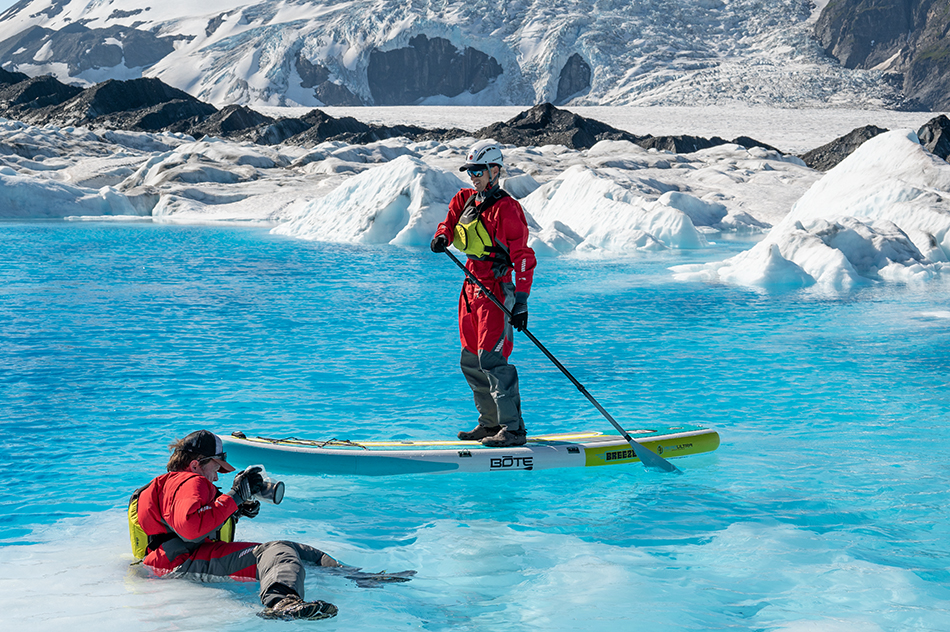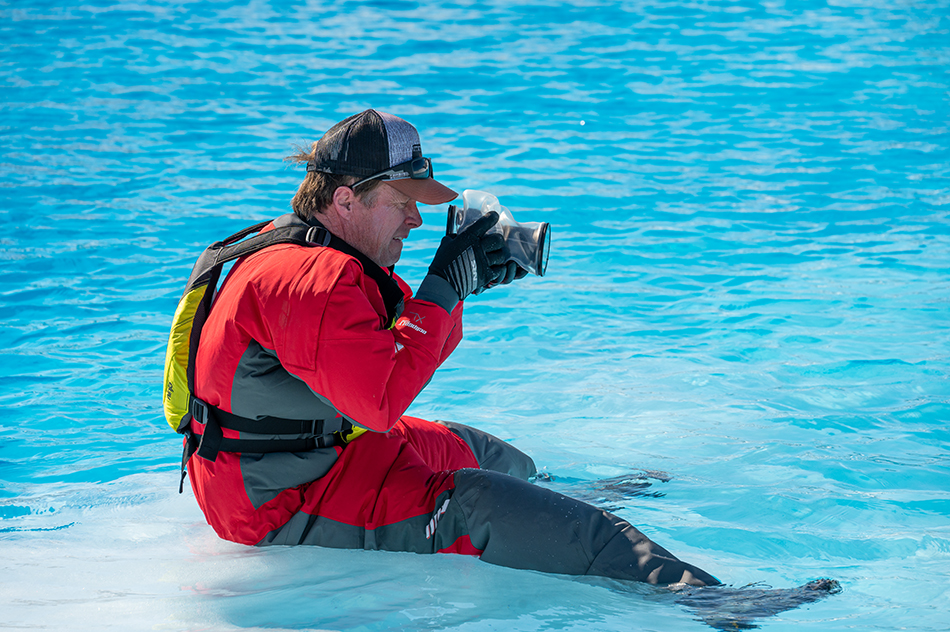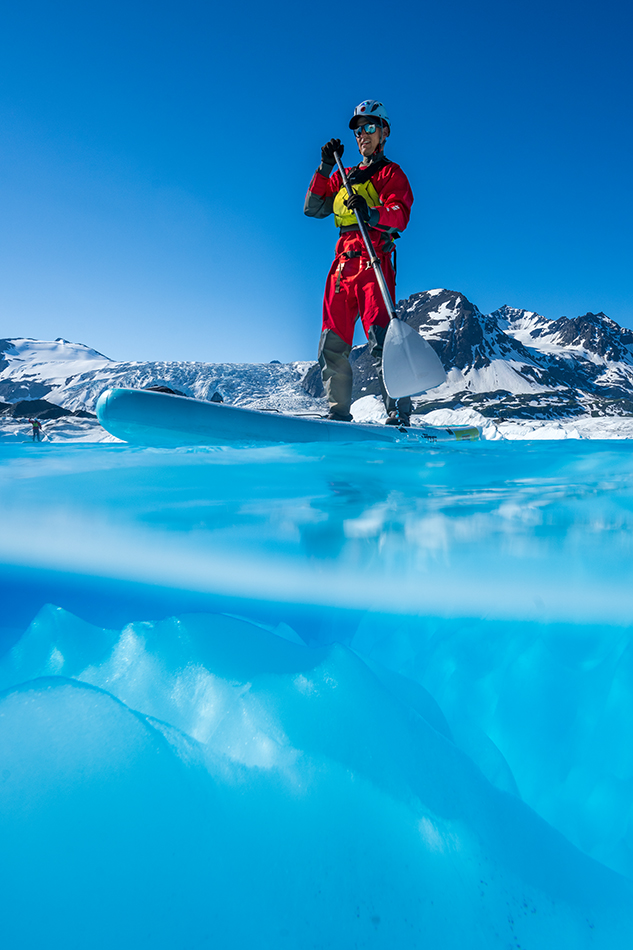
Last week I was in Alaska for a tourism assignment. We had some of the best weather I have ever seen in Alaska, 70 degrees and sunny skies day after day. This worked great for our shoot, including a spectacular day on the Knik Glacier photographing paddle boarding. Yes, you heard right. Tourism is getting more adventurous these days. Why not jump into a helicopter, fly up to a massive glacier and some blue pools, blow up the boards and have some fun!? Honestly it was a riot, just amazing scenery everywhere you looked.
I really wanted to do over/under images on this shoot. Over/under images are half above and half below the water. I like to use a wide angle, 20mm or wider, so I can get a lot of coverage below the water. Often the challenge with these images is the underwater part is much darker than the above water part. But that was not the case with white ice, crystal clear water and high overhead sun lighting up everything in the scene.
For years I have used dedicated underwater housings. These are very expensive, often well over $2000. They give you full control of your camera dials and buttons, and can go to great depths. But every time you buy a new camera your housing no longer works. Ouch! Wouldn’t it be nice to find a cheaper housing that might work for a few generations of new cameras? I think I found one…Outex.

As the photo at top shows, this housing is very simple. It consisted of two end ports of high quality glass and a clear flexible silicone mid section. You buy the housing with a ring that will screw onto the front of your lens…get the right diameter. The back section has a bar that pushes the clear port away from your viewfinder so it is easier to see the LCD and look in the viewfinder. Here is the good news…it costs about $500 and is incredibly small. My high dive housings are huge and need separate bags for travel.

It took me about 20 minutes to attach the housing. Basically you are just pulling the silicone over the camera body and screwing down the ports to create a seal on the ends. I used my Z7II and with the housing attached it easily fit in my camera bag, and didn’t weigh a thing. Getting in water that was 36 degrees was interesting, but with my 20mm I could see above and below water. I had my paddle board models do laps as I tried to focus and shoot. As much as I would like to use my titling LCD screen, I do better looking through the viewfinder. So I just dipped my head into the water (ouch!), looked through the viewfinder and took images. I was able to move my focus point around pushing the thumb pad through the flexible housing. The housing didn’t leak at all.
Overall I really liked the Outex housing, and it worked as advertised. I’ll be taking it to the Galapagos soon, and will report how it does with more extended time in the water. The housing was just what I needed for our Alaska glacial pool shoot.